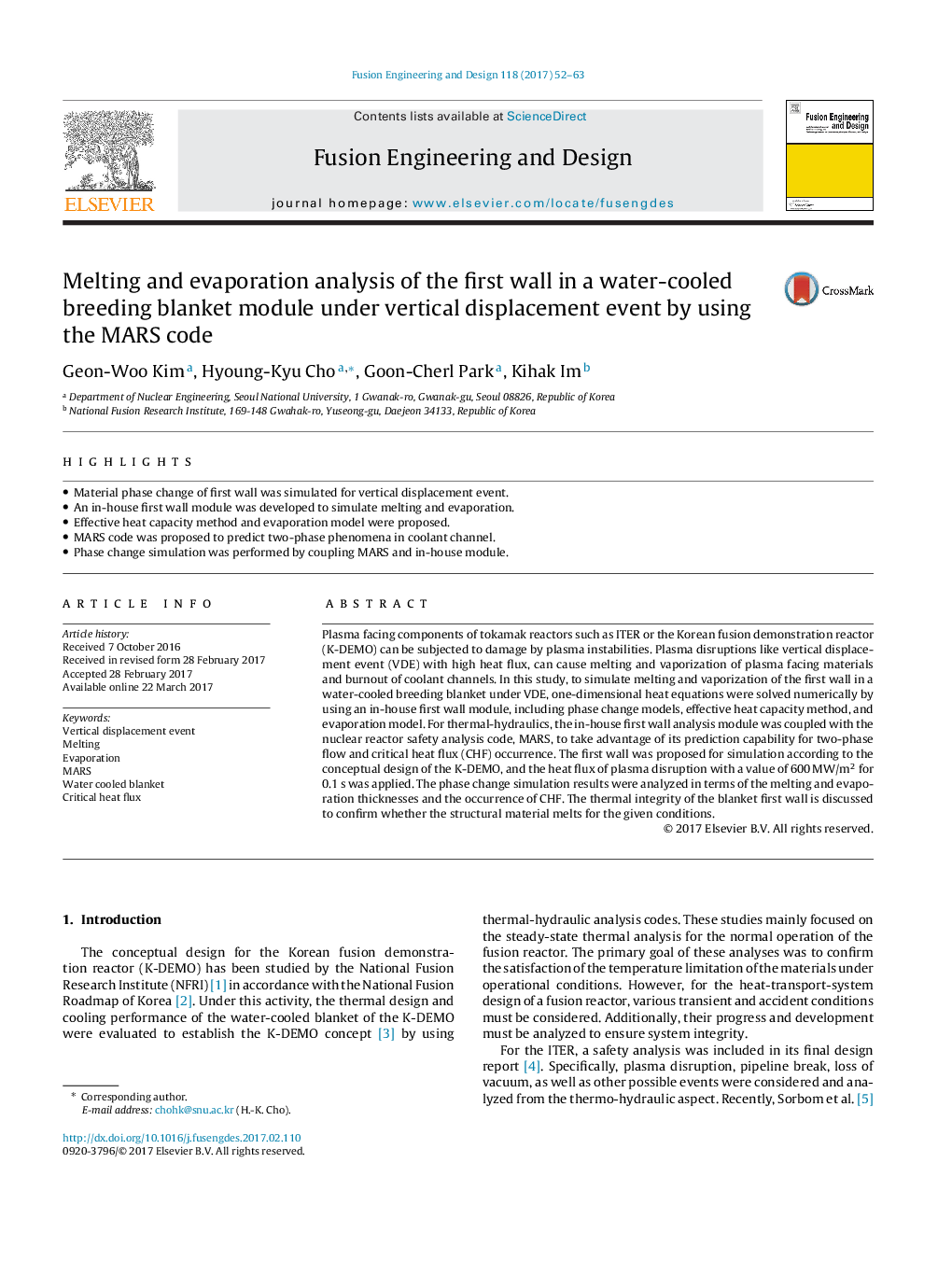| Article ID | Journal | Published Year | Pages | File Type |
|---|---|---|---|---|
| 4921134 | Fusion Engineering and Design | 2017 | 12 Pages |
Abstract
Plasma facing components of tokamak reactors such as ITER or the Korean fusion demonstration reactor (K-DEMO) can be subjected to damage by plasma instabilities. Plasma disruptions like vertical displacement event (VDE) with high heat flux, can cause melting and vaporization of plasma facing materials and burnout of coolant channels. In this study, to simulate melting and vaporization of the first wall in a water-cooled breeding blanket under VDE, one-dimensional heat equations were solved numerically by using an in-house first wall module, including phase change models, effective heat capacity method, and evaporation model. For thermal-hydraulics, the in-house first wall analysis module was coupled with the nuclear reactor safety analysis code, MARS, to take advantage of its prediction capability for two-phase flow and critical heat flux (CHF) occurrence. The first wall was proposed for simulation according to the conceptual design of the K-DEMO, and the heat flux of plasma disruption with a value of 600Â MW/m2 for 0.1Â s was applied. The phase change simulation results were analyzed in terms of the melting and evaporation thicknesses and the occurrence of CHF. The thermal integrity of the blanket first wall is discussed to confirm whether the structural material melts for the given conditions.
Related Topics
Physical Sciences and Engineering
Energy
Energy Engineering and Power Technology
Authors
Geon-Woo Kim, Hyoung-Kyu Cho, Goon-Cherl Park, Kihak Im,
